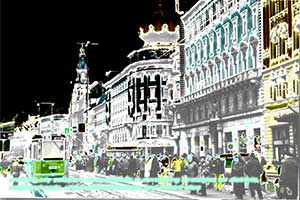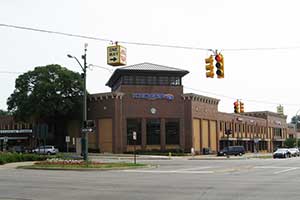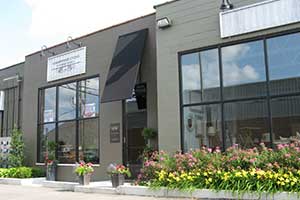
Those very traits are more relevant now than they’ve been in the last 20 years, said Mark Nickita, president of Archive DS, at the League’s Suburban Summits in May. They are part of the urban lifestyle that baby boomers and millennials – the drivers of development – are seeking. Nickita pointed out that communities like Ann Arbor that offer that vibrant, dense, pedestrian-oriented environment weathered the recession far better than most Michigan cities. Suburbs that strive to create a similar sense of place and make walkability a priority are positioning themselves for success.
Revenue Opportunities
Creating a sense of place can result in significant economic benefits to the community. Nickita suggests taking a serious look at available land and buildings and rethinking alternative uses that can enhance the bottom line.
He shared the examples of a vacant Kmart shopping center in Troy – the same land area as downtown Northville – and the old Livonia Mall – the same size as downtown Plymouth. Redeveloping these sites as dense, mixed-use, walkable properties can bring in much higher tax revenue. For example, a Kroger shopping center in the suburbs typically pays annual property taxes of about $16,000 per acre. A Kroger store built in a much denser, walkable area such as downtown Birmingham brings in almost four times as much – about $62,000 per acre.
Reuse Opportunities
Infusing your community with a vibrant sense of place also presents opportunities to reuse buildings and properties through creative zoning and visioning. Nickita suggests taking areas that the city controls and making the best of them with forward-thinking design that includes things like walkability, bike access, and the needs of seniors.
He cited the example of The Rail District in Birmingham, a set of old industrial buildings with a lot of vacancies. The city transformed the area into a mixed-use, pedestrian-oriented district. By loosening up their zoning policies and creating a visionary plan, the city now has a cool, connected area with unique uses they never would have thought of, such as interior design studios, Robot Garage and a swimming school for babies.
Another example is the Stiles District in Rochester Hills. The site housed an old two-story school building that sat vacant for years. A developer is now repurposing the school and creating a mixed-use space that residents can walk to and enjoy.
City Flexibility
Nickita advises that the key to creative property re-use is flexibility in zoning codes. It’s impossible to conceive of all the possible uses that developers might present. But if the city is open to considering new and innovative proposed uses, they’re on the right track to creating an exciting sense of place that encourages even more development.

